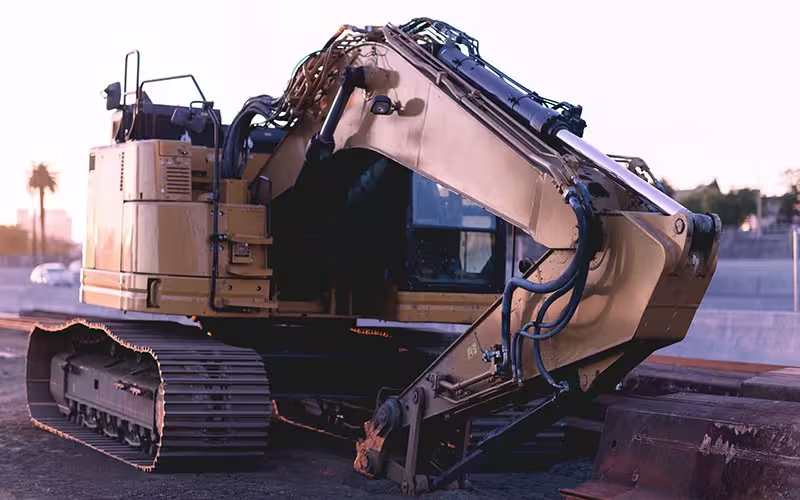For Large-Scale Commercial Development Tulsa, see our main page here or call us at 918-695-9461.
Understanding the Scope of Large-Scale Commercial Development Tulsa
Commercial real estate plays a critical role in shaping Tulsa’s economic future. Large-Scale Commercial Development Tulsa includes everything from office buildings and shopping centers to multifamily complexes and industrial parks. These projects often span thousands of square feet and require coordination between architects, engineers, developers, and city planners.
In other words, they’re ventures that demand strong leadership, secure financing, and a clear vision. For example, the expansion of the Tulsa Innovation Labs has spurred new commercial activity, attracting tech firms and startups. Similarly, large mixed-use developments like Santa Fe Square have created modern spaces blending office, residential, and dining options seamlessly.
What Sets Tulsa Apart in Commercial Development?
Tulsa stands out for its business-friendly environment, expanding infrastructure, and strategic location. These factors contribute to the city’s growing demand for commercial space. Moreover, the combination of available land, supportive local government, and a skilled workforce creates an ideal environment for investors and developers.
Further, the cost of living and doing business in Tulsa remains lower compared to other major cities in the U.S., making it attractive for companies seeking expansion. Consequently, developers pursuing Large-Scale Commercial Development Tulsa benefit from lower overhead costs and gain access to a growing labor market.
Planning Strategies for Large-Scale Commercial Development Tulsa
A successful large-scale commercial project doesn’t happen overnight. It begins with strategic planning, zoning compliance, and market research. Without insight into consumer demand and local economics, projects risk failure before they ever break ground.
Effective site selection—including access to highways, public transportation, and nearby amenities—is vital. Developers must also consider potential environmental concerns, traffic impact studies, and long-term sustainability strategies.
- Conduct feasibility studies to estimate ROI and market need.
- Engage stakeholders and city officials early in the planning stages.
- Create flexible design plans to adapt to market shifts.
- Ensure compliance with state and local building codes.
Strategic planning requires balancing vision and practicality. For instance, a tech-focused park must not only consider office spaces but also high-speed internet, parking, green zones, and walkability for employees.
Major Trends Shaping Large-Scale Commercial Development Tulsa
Today’s commercial developments are increasingly future-focused. As a result, new trends emphasize sustainability, technology integration, and multi-use functionality. In Tulsa, developments with energy-efficient features, smart building technology, and mixed-use spaces are in high demand.
In addition, many developers are shifting toward creating live-work-play environments. These ecosystems combine residential, commercial, and entertainment areas to reduce commute times and promote community interaction. The Boxyard in downtown Tulsa serves as a great example, transforming shipping containers into vibrant retail and office spaces.
The Role of Public-Private Partnerships (PPPs)
Public-private partnerships often play a crucial role in Large-Scale Commercial Development Tulsa. These collaborations help bridge funding gaps, streamline approval processes, and ensure projects align with public interests. For example, the Gathering Place—although a public park—is part of a broader city development strategy supported by private donors and city entities.
Such partnerships often lead to:
- Faster planning and approval cycles.
- Shared risk and investment between developers and government entities.
- Access to tax incentives or grants.
Ultimately, productive cooperation between public and private sectors leads to resilient and more impactful projects.
Challenges Developers Face in Tulsa’s Commercial Landscape
Despite Tulsa’s economic potential, developers face notable challenges. Rising construction costs, material shortages, and labor market fluctuations can delay projects. As a result, budgeting must include contingencies for unexpected delays or cost increases.
Furthermore, developers must navigate local regulations, which, although business-friendly, still require permits, approvals, and inspections. These steps—themselves subject to hold-ups—can slow progress and increase investment risk.
Strategies for Overcoming Development Hurdles
To reduce delays and mitigate risk, investors depend on local expertise and careful project management. Here are a few proven strategies:
- Partner with experienced local contractors and consultants.
- Use technology to track budgets, timelines, inspections, and regulatory changes.
- Phase project components to allow for flexibility and lower initial risk.
- Build strong community ties to support zoning changes or variance approvals.
In short, preparation is key. By anticipating challenges early, developers can stay on schedule and within budget.
Case Study: Tulsa’s Vast Data Center Investment
One standout example of Large-Scale Commercial Development Tulsa is Google’s $600 million data center. Built in nearby Pryor, it’s had a ripple effect on Tulsa’s tech economy. The facility created hundreds of jobs and sparked demand for additional housing, commercial spaces, and services.
Likewise, this development led to upgrades in electricity infrastructure and fiber networks in the area, benefiting other industries. It illustrates how one large-scale project can catalyze growth across multiple sectors and communities.
Design and Technology Innovations in Modern Development
Modern commercial construction is more advanced than ever. Smart building systems, automated energy tracking, and cloud-based property management tools are now common. These innovations improve efficiency, reduce costs, and offer tenants better control over their environment.
In Tulsa, many new developments reflect this tech-forward approach. For example, new office builds in the Tulsa Arts District integrate solar panels, advanced HVAC systems, and virtual access control. Consequently, they appeal to eco-conscious businesses and tenants looking for smart functionality.
Why Sustainability Matters in Today’s Planning
Tenants and investors alike are favoring green-certified buildings. LEED certification and other sustainability programs are becoming standard in proposals for Large-Scale Commercial Development Tulsa. Sustainable features not only reduce long-term operating costs but also improve tenant satisfaction and future-proof buildings against regulatory shifts.
For instance, choosing high-quality insulation may add to initial costs but result in substantial savings over time. Similarly, low-flow plumbing and rainwater recovery systems conserve resources and add positive branding value.
FAQ: Common Questions About Large-Scale Commercial Development Tulsa
What qualifies a project as a large-scale commercial development?
Generally, any development exceeding 25,000 square feet or involving multiple building types—offices, retail, industrial—qualifies as large-scale. These projects often require multiple phases and diverse funding sources.
How long does a large-scale commercial project typically take in Tulsa?
Timelines depend on scope, permits, and construction availability. However, most large developments take between 18–36 months from conception to completion.
Is Tulsa a good market for commercial real estate investment?
Yes. Tulsa offers low costs, a growing workforce, and economic programs supporting real estate investment. It’s considered an emerging hot spot for developers, especially in tech and logistics industries.
What role does the city government play in these projects?
The City of Tulsa facilitates zoning approvals, infrastructure support, tax incentives, and ensures projects align with long-term urban development plans. Active engagement from city leaders often strengthens large developments.
Conclusion: Building Tulsa’s Future
Large-Scale Commercial Development Tulsa is shaping the city’s identity and future. These projects provide more than buildings; they generate jobs, attract investment, and inspire innovation. With careful planning, strong partnerships, and a shared vision, Tulsa continues to rise as a hub for thoughtful growth and dynamic development.
Follow us on Facebook here.


